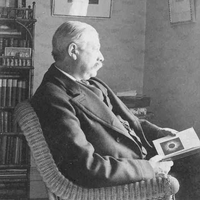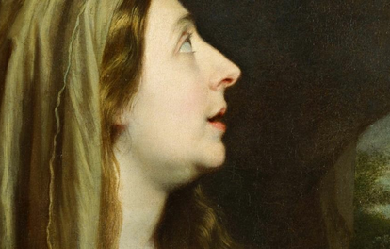Eleusinia
The sun-bronzed Arabs, living at the base
Of Karnak’s mighty ruin, see in it
The work of no man’s hand. They cannot think
Its lofty beauty and majestic form,
So awe-begetting, even in decay,
Are the unaided deed of their own kind.
But, as most men are wont, when sharply faced
By problems that they do not understand,
The squalid Arabs, quite too ignorant
To seek in natural causes for a key,
Exalt their case to the miraculous
And supernatural, and so believe
That monstrous genii, in antiquity,
To please the holder of some magic ring,
Built Karnak in a night!
All governments,
Books, customs, buildings, railways, ships, and all
The stark realities that men have made,
Are but imagination’s utterances.
The invisible speaks in the visible,
And over all, the high, far-reaching thoughts
Of great imaginations domineer.
First of the Magi, Zoroaster yet
Colors the Western theosophic mind,
Besides the minds of Asian myriads.
Nor have his genii lost hold on men;
But are an explanation, in the East,
Of architectural victories, which appear
Beyond the power of human hands to win.
But we, of higher credence, think not so.
Of larger literature and ampler range,
We know the same full-browed intelligence,
The same Masonic wisdom, that upreared
High-girdled Babylon and purple Tyre
And built the Temple of King Solomon,
Built also the sepulchral Pyramids,
Build Philæ, hundred-gated Thebes, and all
Those works stupendous, whose calm grandeur yet
Shows the departed glory of the Nile.
It scarce seems longer past than yesterday
That men undid the brazen clamps which held
Upon its pedestal the Obelisk–
That ray-like shaft, which Thutmes raised at On
To grace the Temple of the Setting Sun–
And found Masonic emblems there bestowed.
Such useful emblems have been found withal
In prehistoric ruins Mexican.
If other clue were needed to connect
Our modern Craft with builders of the past,
We have the evidence of what we know,-
That nothing can be operative long
And not be speculative too; for Use
Is more than manual. Intelligence
Must see the ideal in the real, and clothe
Upon the impalpable and naked truth
The palpable resemblance; it must needs
Behold in all that is material,
External, the express embodiment,
Or signature, of far more lasting things,
Which are internal, spiritual.
Swedenborg,
Upon the other worlds of heaven and hell,
His ideality imposed, and strove
To picture them, the universe and God,
Using the splendid words of holy writ
As signs and tokens of the mysteries
That, in imagination, he beheld.
But not so far the wise Freemason dares.
In square and compasses, in setting-maul,
And in the other stated working-tools
Used by the Craft, he sees an ideal use.
To him they are the emblems of such things
As have been found alike in every soul
And make the world fraternal.
Symbolism
Is the rich blood and life of Masonry.
A symbol is the solid link between
The real and the ideal. It must be
That man himself, the crown of earthly things,
Made in his Maker’s image, is the true,
The only symbol of the Power Divine.
It follows that sublime Freemasonry
And heaven-born, strong-pinioned Poetry
Are one at heart; for, whatsoever be
Sincere, commensurate, symbolical,
Is native of the Muse-her work. To think
In symbols is imagination’s house.
So the fast hold which Masonry has kept
Upon the minds of men for centuries–
For long millenniums-is, in truth, the same
As that of Poetry. For Poetry
Drank from the fountain of immortal youth,
Then rose in beauty, like the Morning Star,
And lit the holy, intellectual fire,
Guide of our faith and practice, that is laid
Upon Masonic altars.
When expressed
In buildings she is seen, as in the tree
The hamadryad, we but change her name,
And Architecture nominate the Muse.
But the broad tenets, on whose soil is based
Our Ancient Order, are a fertile land,
And all the arts and sciences alike
Find in it healthful sustenance, and, nursed
In genial sunshine and condensate dew,
Burst into bloom and yield abundant fruits.


